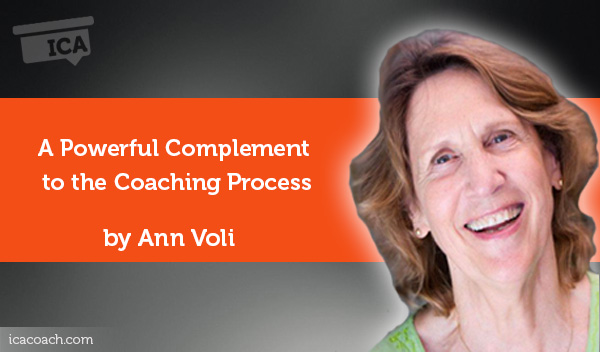 Research Paper By Ann Voli
Research Paper By Ann Voli
(Stress Management Coach, SPAIN)
Introduction
The aim of this research paper is to propose breath work as a powerful complement to the coaching process, providing coaches with a simple, elegant and effective tool to bring both coach and client into the present moment, relax the mind and gain clarity and focus to maximize the coaching session.
An overview of breathing
Breathing, our natural birthright and universal heritage, is our principal source of energy. While we can go weeks without food, days without drinking or sleeping, scarcely two minutes without breathing throws the body into distress. The first act of life is to inhale; the final act is to exhale. Between these two defining acts, we spend our entire lives breathing. Yet most of us pay little attention to our breath unless it fails us. Nevertheless, breathing is the most influential of all other bodily functions; every other aspect is dependent upon it. Its effect on our well-being is greater than diet, exercise or sleep. Breathing is also the only physiological function that can be easily controlled and regulated and is the single most important physiological activity within our conscious control for influencing the nervous system.
As this most basic source of life energy, the breath has been revered in cultures around the world since ancient times. This is reflected by the very words used to describe breath. The Hebrew word ruach means
wind, breath, mind or spirit.
The Latin word spiritus is the same word for “breath” and “spirit”. The Sanskrit word for breath is prana which also means “life force” or “energy”.
Breath work today
While specific breathing techniques have been developed and used over thousands of years to transform consciousness, heal body and mind, and heighten spiritual awareness, until very recently the importance and power of breath work was largely ignored in the West. But now breath work is coming into its own. It is rapidly gaining acceptance and is currently being recommended as a major technique for stress management and health improvement programs.
Dr. Andrew Weil, who integrates traditional and complementary medicine, uses breath work as his main prescription for all stress related conditions, both physical and emotional.
Breath is the key to health and wellness, a function we can learn to regulate and develop in order to improve our physical, mental and spiritual well-being. (Weil, 2007)
Deep breathing is now widely recognized for its profound impact on our physiology and health, says Mladen Golubic, a physician in the Cleveland Clinic´s Center for Integrative Medicine. (Harrold, 2011)
According to Sri Sri Ravi Shankar, the founder of the International Art of Living Foundation which teaches a stress-management program based on breathing techniques,
There are many benefits that breathing exercises can bring into our lives. Breath is linked to different emotions. When we are happy we breathe differently, when we are stressed we breathe differently, when we are anxious the pattern of our breath is different. Manipulating the breathing, you can change the emotions.
The physiology of breathing
To fully grasp why our breathing patterns play such a major role in our physical and emotional health, an understanding of the physiology of breathing is helpful.
Dr. Mehmet Oz, director of the Cardiovascular Institute and vice chair of surgery at New York-Presbyterian Hospital in New York City, explains,
It’s an important foundation because it stimulates the brain stem and triggers the release of mood-modulating brain chemicals like endorphins and neuropeptides. Just a few seconds of deep breathing can alter your brain’s chemical balance enough to create a great sense of peace. (Fellingham, 2006)
In the words of Patrick McKeown,
There is not a more direct approach to enhancing health and well-being than by taking deliberate control of it. If you change your breathing, your entire biological chemistry will change as well. The rate at which oxygen is delivered to all cells and tissue, the pH, the aperture of all vessels, blood pressure, pulse, the production of hormones and even the excitability of the nervous system, are all directly regulated by the way in which we breathe (McKeown, 2004).
Dr. Rajiv Desai emphasizes how conscious breathing patterns directly affect the nervous system.
The stress response is regulated by the sympathetic nervous system, whereas the relaxation response is regulated by the parasympathetic nervous system, and can be conditioned by the individual through voluntary conscious breathing. This conditioned ability for us to actively relax can bring a measure of control over the way stress affects us. (Desai, 2011)
Esther Sternberg, physician and researcher at the National Institute of Mental Health offers additional information.
The relaxation response is controlled by another set of nerves, the Vagus nerves. Think of a car throttling down the highway at 120 miles an hour. That’s the stress response, and the Vagus nerve is the brake. When you are stressed, you have your foot on the gas, pedal to the floor. When you take slow, deep breaths that is what is engaging the brake. (Cuda, 2010)
This nerve is essential for initiating the relaxation mechanism. From the diaphragm the Vagus connects to the emotional center of the brain, the limbic system, and reciprocally feeds information from the body to the brain. When the diaphragm is moving consistently and extending in a non-forced manner, the Vagus nerve is active and informs the brain we are safe and the relaxation response is triggered. Done regularly, the vagus tone increases as does our capacity to manage future stress in a stress-less way. (Yoga for the Mind) With reference to slow, deep breaths, it is interesting to note that while the normal breathing rate is 14 to 16 breaths per minute, in order to increase the parasympathetic response, less than 12 breaths per minute is required. (Harrold. July 31, 2011)